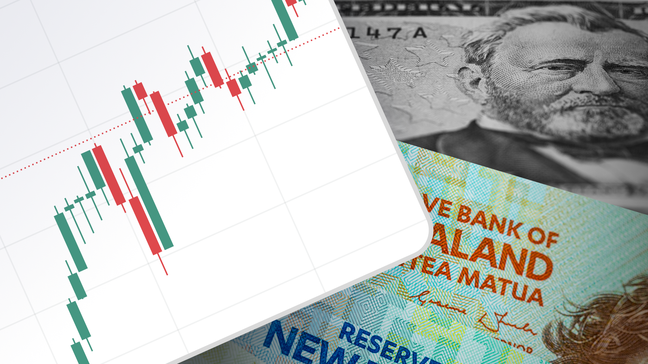Slightly better market sentiment entertains traders early Monday even as holidays in the US and Canada restrict the momentum. Also challenging the moves could be a light calendar in the Asia-Pacific zone, as well as mixed concerns about the global central banks’ policy normalization.
Even so, China’s return after a week-long absence allowed optimists to keep the reins, amid firmer travel data, whereas the recently mixed US numbers add strength to the upbeat mood.
With this, the US Dollar remains depressed after a five-week uptrend whereas the Asia-Pacific shares edged higher. Further, yields remain mostly easy amid the absence of US bond traders.
Elsewhere, EURUSD and GBPUSD pare the previous week’s losses during dicey markets whereas USDJPY lacks clear directions as traders fail to respect hawkish bias about the Bank of Japan (BoJ).
Gold price extends the previous day’s breakout of a short-term key resistance but Crude Oil retreats amid demand woes. That said, other commodities are mostly firmer and allow the Antipodeans like AUDUSD and NZDUSD to print minor gains. Among them, the Kiwi pair rises the most among the G10 currency pairs due to the upbeat New Zealand services PMI data and hawkish concerns about the Reserve Bank of New Zealand (RBNZ).
On a different page, ETHUSD rises to the fresh high since May 2022 whereas BTCUSD also remains firmer at the multi-month top as whales turn most optimistic about the top-tier cryptocurrencies.
Following are the latest moves of the key assets:
- Brent oil snaps a two-day winning streak with minor losses around $83.00.
- Gold price rises for the third consecutive day around $2,020 at the latest.
- USD Index drops for the fourth consecutive day while posting mild losses near 104.10 as we write.
- Wall Street closed with mild losses but the Asia-Pacific stocks edged higher. That said, shares in Europe and the UK also print minor gains during the initial hour of trading.
- BTCUSD seesaws near the multi-month high surrounding $52,500 while ETHUSD rises to a fresh high since May 2022 to $2,920 by the press time.
Lackluster start of the holidays shortened week...
Monday appears an inactive day as mixed headlines of the last week join a holiday in the US and Canada. In doing so, traders fail to fully cheer China’s return from a week-long Lunar New Year holidays.
On Friday, February preliminary readings of the University of Michigan’s (UoM) Consumer Sentiment Index (CSI) came in 79.6 versus the analysts’ estimations of 80.0 and 79.0 prior. Further, the US Producer Price Index (PPI) for January rose 0.9% YoY versus 0.6% expected and 0.8% revised prior. Core PPI also improved from the previous figures and market forecasts.
Even so, Federal Reserve Bank of Richmond President Thomas Barkin emphasized that January economic data has been messy, not that good, which in turn challenged the US Dollar bulls even as the yields were edging higher. On the same line were comments from Atlanta Fed President Raphael Bostic who said, “If the economy performs well, I'm ok waiting to cut.”
However, San Francisco Fed Bank President Mary Daly also defended the hawkish policy and put a floor under the US Dollar, especially amid not-so-depressing US data. That said, Fed’s Daly said, “Fed needs to resist the temptation to act quickly when patience is needed.” The policymaker also said that the latest data wasn’t surprising, which in turn defends the hawkish bias about the Fed and favors the Greenback.
It should be noted that the US equity benchmarks closed the week on a negative note while stopping a five-week winning streak, which in turn helped the US Dollar to print a five-week winning streak despite positing minor gains at the latest.
Further, European Central Bank (ECB) Governing Council member Isabelle Schnabel pushed back the market’s concerns about the central bank’s rate cuts and put a floor under the EURUSD price while saying, “We must be cautious not to adjust policy stance prematurely.”
GBPUSD also edges higher past 1.2600, following a three-week downtrend, as softer US Dollar joins upbeat UK housing data. That said, the latest figures from Rightmove signaled the first annual rise in British property prices in six months.
Also, hawkish comments from Bank of England (BoE) Chief Economist Huw Pill added strength to the GBPUSD rebound as he stated that getting to the point of reducing Bank Rates is "still some way off". The policymaker also added, “Weak activity in the UK is not putting much downward pressure on inflation.”
It should be observed that a holiday in the US markets restricts the USDJPY moves despite a retreat in the US Dollar. In doing so, the Yen pair ignores firmer prints of Japan’s Core Machinery Orders for December, as well as comments from Japanese Finance Minister Shunichi Suzuki who signaled, “There will be a phase when interest rates go up”.
Above all, China-linked optimism allowed the Antipodeans and commodities to remain firmer. That said, news that consumer spending in China jumped 47% higher than pre-Covid level offered initial positivity to the markets. On the same line was news that the People’s Bank of China (PBoC) kept the one-year and five-year Medium-term Lending Facility (MLF) rates unchanged while also signaling a cut in the Loan Prime Rates (LPR).
Meanwhile, grim updates from the Red Sea challenge the market’s positive mood as the latest headlines suggest an abandoned ship due to the Houthi terrorists’ attacks. Furthermore, comments from China’s Foreign Minister Wang Yi also tamed the risk-on mood as the diplomat said, “US Secretary of State Antony Blinken that the United States must lift restrictions on Chinese firms and individuals, and attempts to de-couple from Beijing would only hurt Washington.”
- Strong buy: USDCAD, USDJPY
- Strong sell: Crude Oil, US Dollar, GBPUSD
- Buy: BTCUSD, ETHUSD, Nasdaq, Gold
- Sell: DAX, FTSE 100, BTCUSD, AUDUSD, EURUSD
Nothing major to watch, central bankers eyed for the week…
While the US and Canada markets are off, a monthly economic report from the German central bank will entertain the momentum traders and can allow EURUSD to edge higher. Apart from that, major attention will be on this week’s monetary policy meetings from the top-tier central banks like the Fed, RBA, ECB, etc. Should the policymakers defend current rates, the odds of witnessing further US Dollar run-up, especially amid doubts about China’s economic recovery, can’t be ruled out.
May the trading luck be with you!




